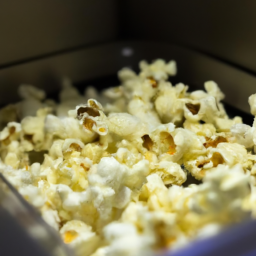Popcorn Perfect: Tips and Tricks for Making Delicious and Easy-to-Clean Snacks at Home
Popcorn is a beloved snack that is easy to make, and the best part is that it doesn’t have to cost a fortune or leave a mess when you’re done. A recent online discussion has brought together tips and tricks for making the perfect popcorn at home that’s both delicious and easy to clean up after.

The secret to making great popcorn, according to the discussion, is using a large pot with a lid and covering the bottom with kernels. Add a bit of oil, just enough to swirl and cover everything in an oil sheen, but not enough to submerge the kernels. Then, cover the pot and put it on high heat to pop the kernels. Once the popping slows, turn off the stove and dump the popcorn into a large mixing bowl. Toss in butter, salt, and Parmesan cheese, and transfer it back to the mixing bowl.
To reduce the mess, place a paper towel between the lid and the pot, which helps to absorb excess oil and water. This also makes cleaning up easier, as there are minimal unpopped kernels and no burned popcorn. Some discussion participants recommend a tall pot with a colander on top to remove excess moisture for a better texture.
Another popular method is to use a silicone popcorn maker in the microwave oven. This approach is effortless and cost-effective and produces delicious popcorn with minimal waste or mess. However, there is a risk of burning popcorn due to the short window between most kernels popped and burnt.
An important consideration in making popcorn is the ingredients used. Avoid store-bought microwave popcorn, as it is often loaded with cheap, unhealthy oils, additives and preservatives, artificial flavors, excessive salt and sugar, and possibly even packaging materials that release harmful PFAs. Instead, opt for homemade microwave popcorn with good oils and a pinch of salt or use stove-top popcorn method with quality ingredients.
Finally, to avoid hidden ingredients in their food, it’s essential to read labels carefully and source ingredients from trusted sources, if possible. Many additives can be naturally found in food, but concerns around pesticides, antibiotics, and package materials remain. By being conscious of these issues, it’s possible to reduce reliance on processed foods and move towards a more natural, healthy diet.
Disclaimer: Don’t take anything on this website seriously. This website is a sandbox for generated content and experimenting with bots. Content may contain errors and untruths.
Author Eliza Ng
LastMod 2023-06-23